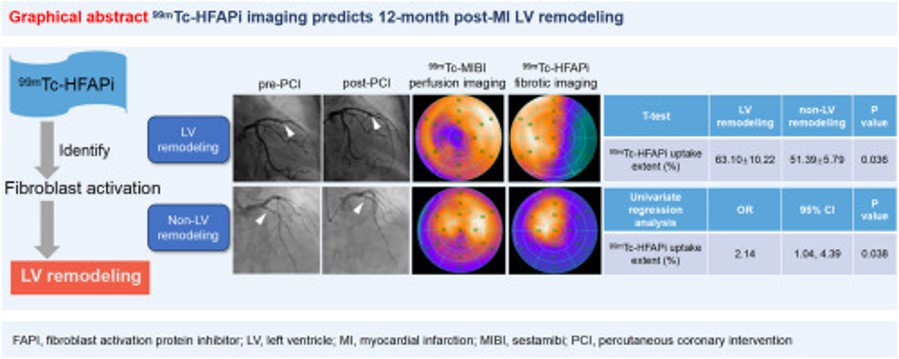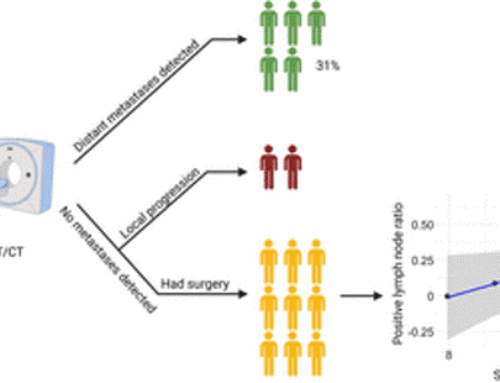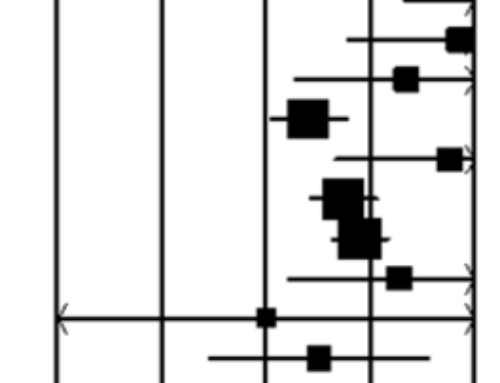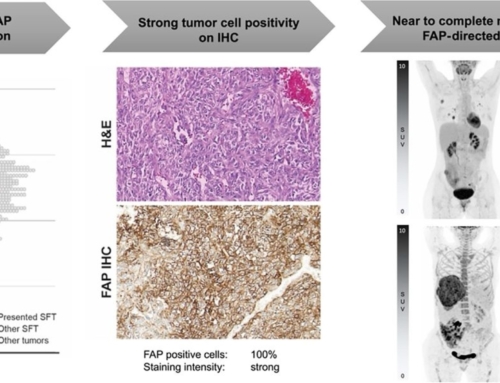Cuncun Hua, Xiao-Ying Xi, Yeping Zhang, Ni Suo, Bin Tu, Ye Liu, Xiaoyan Yang, Xiaoyan Liu, Pixiong Su, Boqia Xie, Minfu Yang, Yanjiang Wang
Abstract:
Background: Despite improved treatments for acute myocardial infarction (AMI), myocardial fibrosis remains a key driver of adverse left ventricular (LV) remodeling and increased mortality. Fibroblast activation and proliferation significantly contribute to this process by enhancing cardiac fibrosis, which can lead to detrimental changes in LV structure. This study evaluates the effectiveness of 99mTc-labeled fibroblast activation protein inhibitor (99mTc-HFAPi) SPECT imaging in predicting LV remodeling over 12 months in post-AMI patients.
Methods: A cohort of 58 AMI patients (46 males, median age 61 [53, 67] years) underwent baseline 99mTc-HFAPi imaging (5 ± 2 days post-MI), perfusion imaging (6 ± 2 days post-MI), and echocardiography (2 ± 2 days post-MI). Additionally, 15 patients had follow-up 99mTc-HFAPi and perfusion imaging, while 30 patients had follow-up echocardiography. Myocardial 99mTc-HFAPi activity was assessed at the patient level. LV remodeling was defined as a ≥10% increase in LV end-diastolic diameter (LVEDD) or LV end-systolic diameter (LVESD) from baseline to follow-up echocardiography.
Results: AMI patients displayed localized but non-uniform 99mTc-HFAPi uptake, exceeding perfusion defects. Baseline 99mTc-HFAPi activity exhibited significant correlations with BNPmax, LDHmax, cTNImax, and WBCmax, inversely correlating with LVEF. After 12 months, 11 patients (36.66%) experienced LV remodeling. Univariate regression analysis demonstrated an association between baseline 99mTc-HFAPi uptake extent and LV remodeling (OR = 2.14, 95%CI, 1.04, 4.39, P = 0.038).


![FAP Expression in Renal Tumors Assessed by [68Ga]Ga-FAPI-46 PET Imaging and FAP Immunohistochemistry: A Case Series of Six Patients](https://sofie.com/wp-content/uploads/2025/12/info.ibamolecular-scaled-500x383.jpg)


![[68Ga]Ga-API-46 PET accuracy for cancer imaging with histopathology validation: a single-centre, single-arm, interventional, phase 2 trial](https://sofie.com/wp-content/uploads/2025/09/image-500x383.png)
